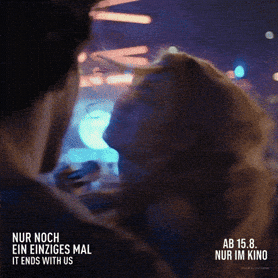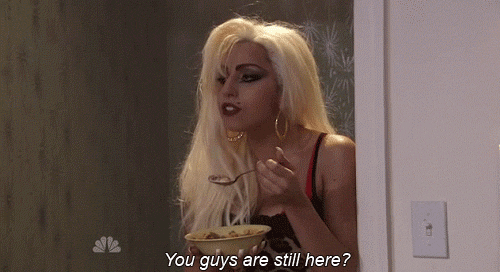- The Word on Record
- Posts
- The Summer of Controversies
The Summer of Controversies

The newsletter that explores the art of storytelling, effective communication strategies, and the everyday impact we can create 🧚♀️
👋 Buongiorno, Bonjour, Hola, Hello
It’s been a while, hasn’t it?
I’m so excited to be back and working on The Word on Record. I decided to take a step back during the summer to rewind, be as present as possible for clients, and think truly about where I wanted to take this.
In this edition we will be setting the record straight on…
1. Did it End or Start With “It Ends With Us”?
2. L’affaire Mazan
3. News
🎬 Did it end or start with “It Ends With Us?”

Gif by sony_pictures_de on Giphy
In August, the film adaptation of Colleen Hoover’s book, It Ends With Us, came out. The story follows the tumultuous relationship between Lily Bloom and Ryle, exploring themes of love, loss, and the complexities of domestic violence.
The marketing campaign for the film IT Ends With Us sparked significant controversy due to its perceived insensitivity towards survivors of domestic violence. It was argued that the promotional materials, which featured lighthearted and romantic imagery, downplayed the serious themes of abuse and trauma depicted in the story.
It started with how the marketing seemed to downplay the tough conversation throughout its marketing campaign with few mentions of DV throughout TikTok, Instagram, etc. Hoover, the author, promoted a It Ends With Us themed nail polish that could be bought at Target. Sentences like "grab your friends, grab your florals" by Blake Lively, the main actress of the film, further reinforced this perception, creating a disconnect between the serious subject matter of the novel and the lighthearted tone of the promotional content.
But this is what started what could feel like a campaign that was led by Lively, who continuously felt like was blundering throughout all the promotional materials. In interviews, she would downplay addressing survivors and make jokes out of giving them access to her (“should I share my location?”), invited influencers to the premier to promote her hair care product, and would only want to talk about the floral wardrobe she was wearing. Anytime she was faced with questions about her character being a survivor of DV, she would simply answer “she’s so much more than that".
Though that answer is in fact true, survivors are more than what happened to them, for many survivors online it felt like downplaying the significance of their experiences and the trauma they endured.
This approach led to criticism and concerns about the potential to minimize the severity of domestic violence.
Key Outcomes
Damaged reputation
💡 The controversy tarnished the film’s reputation and raised questions about multiple individuals and their understanding of the issues depicted in the story.
Boycotts and Negative Reviews
💡 Many people decided to boycott the film as a result of the marketing controversy, leading to negative reviews and lower-than-expected box office returns.
Increased Awareness
💡 The controversy brought increased attention to the issue around domestic violence, as many took to social media to share their personal stories and have important conversations around having more responsible portrayals of abuse in media.
It’s a call for more thoughtful marketing
The It Ends With Us controversy underscores the need for more thoughtful and responsible marketing campaigns for films that address serious social issues. When art should reflect the complexities of human experience, should it be marketed in a way that simplifies or trivializes those complexities?
🪧 A call for more men to speak up
It doesn’t matter if we’re wives, daughters, sisters, colleagues or friends.
There’s a case in France that represents women’s darkest fears:
“Who are we truly married to? Who are we actually dating?”
A man posted an ad online inviting men to 🍇 his wife after he 💊 her.
She didn’t know it for years.
She was suffering memory loss.
She thought she was developing Alzheimers.
How did the police find out about this case?
It wasn’t because one of the thousands of men that saw this ad believed it to be wrong and reported it to the police.
It happened because Dominique Pélicot was caught taking photos up women’s skirts in a supermarket.
And when they investigated his computer, they found thousands of photos and videos of him and other men 🍇ing Gisèle, his ex-wife.
Women will be mocked for being fearful of men, mocked for choosing a bear in the woods, and be told not ALL men.
The thing is it is MOST men.
Because for men to speak up against these acts of violence, they would have to truly analyze how they are a part of the problem of perpetuating violence against women.
This means how they
Don’t report an ad calling for men to 🍇 an unconscious woman
Fire women for speaking up or sharing their stories of assault
Not calling out their equals for their sexist and violent jokes
We continuously talk about the red flags survivors should have seen but often overlook the amount of red flags buddies were aware of and never said a thing.
Gisèle could have decided to go through a private trial but she decided to go through a public one so that she could raise awareness around similar cases.
🇫🇷 Elle est une femme très courageuse.
🗞️ News
🩺 This campaign seeks to celebrate the important role migrant play in keeping the UK’s National Health Service running. It was made by photographer and Oscar-nominated director JJ Keith.
🧶 Designer Shonagh Murray started knitting due to struggling with her mental and physical health… and she debuted her work in September during London’s Fashion Week.
The impact of words extend far beyond the page.
Did you get forwarded this newsletter? Join the community to get tips on storytelling and how our content can be used here.
Have a good weekend!
Verónica

